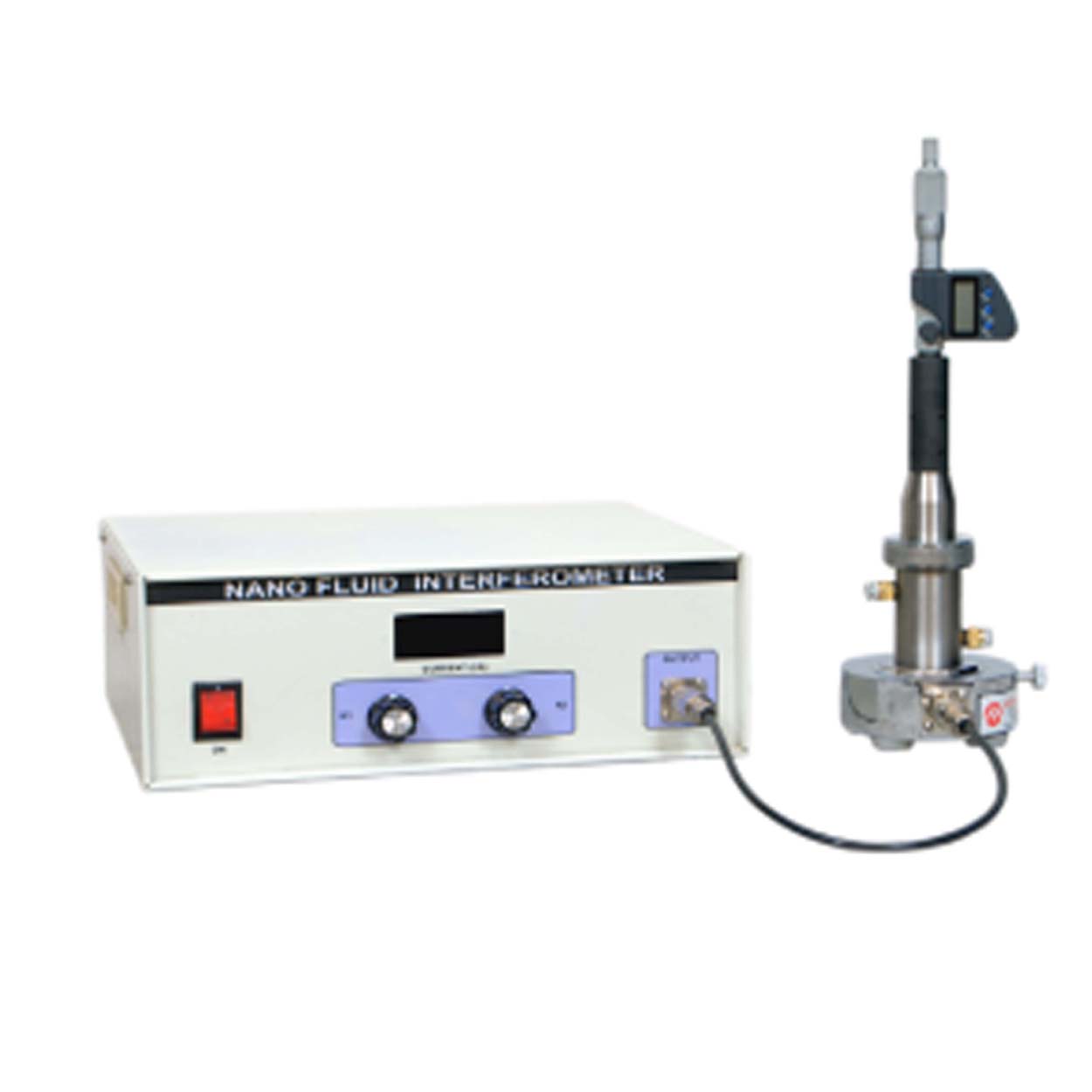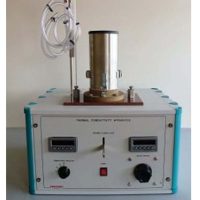Description
Nano Fluid Interferometer
Objective:-
1.Characterization of Nanofluids like Ag/Au & Ferrofluids etc.
2. To evaluate modest nanoparticles concentration in the fluid for significant enhancement of its property.
3. Prediction of enhanced thermal conductivity due to the suspension of the metallic nanoparticles with a very low concentration into the polymeric fluids.
4. Sound Velocity and compressibility of nanoparticles with liquid suspension.
5. Study of Phase transition and to detect/assess weak and strong molecular interactions in Nanofluids.
6.To determine the extent of complexation and calculate the stability constants of such nanofluid complexes.
Working Principle:-
Nanofluid Interferometer generates the sound wave in Nanofluids of different concentrations at different temperatures.
This instrument is low cost & effective tool to optimise the concentration of nanoparticle for best results to achieve the desired property.
In this instrument, Ultrasound waves of known frequency are produced by a Piezo-Electric transducer and its wavelength is measured with digital micrometre with high accuracy within ±0.001mm.
From the knowledge of frequency (f) and wavelength(λ); the compressibility of nanofluid is determined by the following formula :
Sound Velocity in a nanofluid.
Adiabatic compressibility whereρ is the density of nanofluid.
Description:
The Nanofluid Interferometer consists of the following parts:
Wave Generator.
Nanofluid Cells.
Temperature Controller Unit. (RT to 90°C).
Nanofluids – Chemicals to make Ag nanofluid in various concentrations.
Models:-
Model NF-10 (2 MHz )
Model NF-10X (1, 2, 3, 5, 7 and10 MHz)
Model NF-12X (1, 2, 3, 4, 5, 6, 7, 8, 9, 10 and 12 MHz)
Other properties possible with Nanofluid Interferometer
It may be used to evaluate several properties i.e. Hydration number, Hydrogen Bonding, Internal Pressure, Free Volume, Intermolecular Free Length, Miscibility, Compatibility and Glass Transition of Polymers, Phase Transition, Proton Relaxation Rate, Rao Constant Formalism, Relative Association (RA), Space-Filling Factor, Specific Heat Ratio, Solvation Number, Surface Tension, Stability Constant Vander Waal’s Constant, Wada Constant etc.
A Few examples:
Intermolecular Free Path Length (Lf):
wherein = adiabatic compressibility, K = temperature dependent Jacobson’s Constant
Ref: P.S. Nikam and Mehdi Hasan, Asian Journal of Chemistry, Vol. 5 (1993), No. 2, pp. 319-321.
Solvation Number (Sn):
where M and Mo are molecular weight of Solvent and Solution respectively and are adiabatic compressibility of Solvent and Solution respectively and x is the number of grams of salt in 100g of the solution.
Ref: R Ezhil Pavai, P Vasantharani and A N Kannappan, Indian Journal of Pure and Applied Physics, Vol.42, pp.934-936.
Internal Pressure:
where b=(packing factor), R=universal gas constant, K=temperature independent constant, =viscosity of liquid, = density and M= molecular weight.
Ref: C.V. Suryanarayana and P. Pugazhendhi, Indian Journal of Pure & Applied Physics, Vol. 24 (Aug. 1986), pp. 406-407.
Relative Association (RA):
RA= where = density of solvent, = ultrasonic velocity of solvent
Ref: Anwar Ali and Anil Kumar Nain, Acoustics Letters, Vol. 19 (1996), No. 9, pp. 181-187.
Rao’s Constant (R):
R=V ()1/3. or R=( /)1/3
where = density, V = molar volume and M= Molecular Weight.
Ref: R. Paladhi and R.P. Singh, Acustica, Vol. 72, (1990), pp. 90-95.
Wada Constant (W)
where = density, M= Molecular Weight and R= Gas Constant.
Ref: R.P. Singh, G.V. Reddy, S. Majumdar and Y.P. Singh, J. Pure Appl. Ultrason, Vol. 5(1983), pp. 52-54.




Reviews
There are no reviews yet.